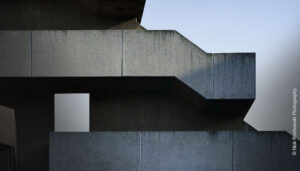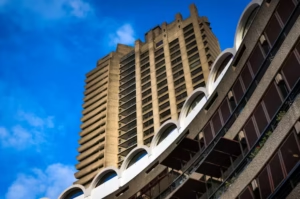Architectural aesthetics ; What if the exterior of a building could convey a tale of inventiveness and sustainability? Finishes in modern architecture serve more purposes than just decoration; they convey values, foster environmental resilience, and link people to the natural world. This blog examines how innovative finishes—adaptable, eco-friendly, and organic—transform design into something genuinely inspiring.
Color Themes, Image Courtesy Terraco
The Development of Eco-Friendly Finishes
Finishes that emphasise longevity, minimal environmental effect, and aesthetic appeal are becoming more popular among architects:
- Environmentally friendly coatings that save resources and increase longevity, such low-VOC compounds. For example, a self-cleaning ECOCLEAN coating sustainably enhanced heritage aesthetics in the Crystalbrook Kingsley project.
- Thermally fused laminate panels meet sustainability and design objectives by fusing eco-cores with sophisticated aesthetics.
- Lime and clay are examples of mineral and plaster finishes that naturally regulate humidity, resist mould, and add tactile appeal without emitting hazardous volatile organic compounds.
- Bark panels and other eco-friendly wall coverings offer handcrafted luxury with textures that stimulate the senses.
These methods demonstrate that aesthetic impact and sustainability can coexist.
Credit: Terraco
Biophilic and Nature-Inspired Surfaces
Nature-inspired design is not only lovely, but also healing:
- Living materials such as mycelium bricks and microalgae façades are introduced by biodesign. These systems sequester carbon, control the climate, and change throughout time.
- In Australia, new biomaterials such as algal bricks, oyster-shell renders, straw, or fungus composites provide regenerative, living substitutes for synthetic materials and cement.
- Fiber-cement cladding reflects a compromise between nature-inspired aesthetics and useful performance by simulating the look of wood, providing longevity, and promoting energy efficiency.
These kinds of finishes connect architecture, ecology, and emotion.

Green Architecture trend: Villa Mandra, Mykonos, Greece. Image Courtesy of Terraco
Adaptive Reuse & Material Transformation
Redefining finishes involves more than just using new, raw materials.
- Architectural heritage is preserved and embodied carbon is decreased by using recycled and reclaimed materials, such as stone or wood.
- By virtue of its close proximity, reusability, thermal mass advantages, and LEED points, local natural stone (dimension stone) promotes sustainability.
- Rammed earth, ethically sourced stone, and cross-laminated timber (CLT) are all becoming more popular as long-lasting, environmentally friendly design choices.
Adaptive reuse improves environmental effect and aesthetics.
Trends in Cutting-Edge Finishing for 2025
A number of innovative finishing trends are beginning to emerge in the future:
- Plant fibres, cork, bamboo, hemp, and other biobased materials are becoming more popular as environmentally friendly substitutes.
- Texture and comfort are being redefined through the fusion of technology and tradition, such as natural plasters enhanced with contemporary performance features.
- Eco-friendly textiles and recycled glass textures are examples of sophisticated eco-finishes that provide a distinctive, tactile elegance.
- Living finishes, such as panels laced with cyanobacteria or walls made of algae, keep pushing the limits of what constitutes life and structure.
These finishes foster communities and ecosystems in addition to being aesthetically pleasing.
Curvature trend: San Beach Club, Dubai UAE, Image Courtesy of Terraco
Create Plans for High Involvement
Architects can create finishes that are both captivating and motivating in the following ways:
- Promote narrative materials by sharing the backstory of repurposed finishes or living surfaces.
- Increase long-term value by selecting finishes that maintain their beauty and age well.
- Incorporate texture, tactile richness, and changing natural elements to create a sense of depth.
- Strike a balance between innovation and authenticity by fusing traditional methods (such as lime plaster or tadelakt) with contemporary sensibilities.
- Educate through design, make use of the finishes on your project to arouse interest, empathy, and admiration.
Example: Outstanding Finishes
- EcoCLEAN coatings: Self-cleaning surface renewal used to sustainably improve a historic hotel.
- Biomaterials in Australia: With their dynamic, living surfaces, algae bricks and oyster shell finishes defy expectations.
- Fibre-cement cladding: Stylish, long-lasting, and effective—a common choice for contemporary outdoor remodelling.
- Fibre-cement cladding: Each illustration demonstrates how finishes may be both captivating and economical.
In conclusion
Enchantment and durability are the true powers of architectural coatings. Buildings become living narratives when finishes are in harmony with innovation, heritage, and environment. Inspired finishes are the new language of meaningful building, whether they are achieved through developing biomaterials or tactile earth-based plasters. Make use of this combination of ethics and beauty to motivate, inspire, and endure.
for more such content click here:
References:
Redefining and Sustaining Architectural Aesthetics with Inspirational Finishes | ArchDaily
Sustainable Design & Eco-Friendly Aesthetics in 2025 – Graphic Eagle








